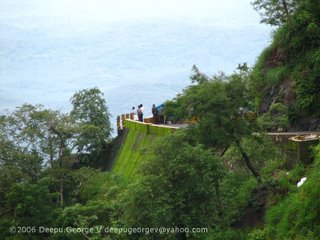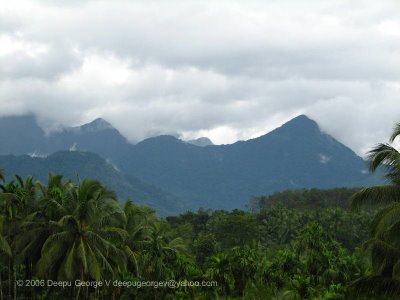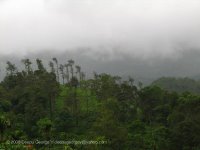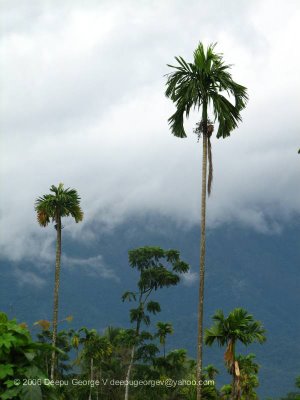“Another interesting tourist attraction centre of Wayanad”, this description will not do enough justice to the beautiful lake situated near the entrance of Wayanad from Calicut. It was a rainy evening, when we drove to this place and took these photos.
I expected the place to be closed and haunted in the evening, but to my surprise I found lot of people there, even from other states of India, spending their evening in boating through the lake and having hot coffee/ snacks from the nearby counters after getting soaked in the monsoon rain. The lake was on its maximum capacity of water and was over flowing in the rain.
I expected the place to be closed and haunted in the evening, but to my surprise I found lot of people there, even from other states of India, spending their evening in boating through the lake and having hot coffee/ snacks from the nearby counters after getting soaked in the monsoon rain. The lake was on its maximum capacity of water and was over flowing in the rain.
The main attraction of this lake is the boating, but a walk through the greenish shade covered narrow road which surrounds the lake is a great experience. Some parts of the road were covered with water and I got my shoes wet, since the lake was over flowing. There is a good tea/ coffee counter near by the lake where we got hot coffee and snacks which valued a lot in the cold chilling rainy climate.
Near by the snacks counter, there was a small shop that sold hand made objects out of bamboo and other forest products and other products like honey, and lot of usual things that we see in any tourist location in Wayanad. A fish museum was nearby but the chilling whether didn’t allow me to stay there too long, since I already had a walk around the lake and was soaked in the rain water.
Near by the snacks counter, there was a small shop that sold hand made objects out of bamboo and other forest products and other products like honey, and lot of usual things that we see in any tourist location in Wayanad. A fish museum was nearby but the chilling whether didn’t allow me to stay there too long, since I already had a walk around the lake and was soaked in the rain water.
The Ghat section road that connects Wayanad and Calicut, the view point situated at the top of the ghat section and the Chain Tree or the “Changala Maram” which now is renamed as Changala Muneeswaran Temple are some other attractions very close by to this location. There Chain Tree is nothing but a big chain hanging down from a Banyan Tree.
People believe the following story about this Chain Tree.
Long back ago, when the British people where fighting against the Indian rulers, they faced a big threat from Pazhassi Raja, because the British soldiers where not able to defend the bow and arrow attack of Pazhassi’s army who hided behind the trees and mountains of this Ghat section. There was no road that leads to the top of the mountain, so that the British army was not able to climb up and fight in the plane grounds. But they found one man belonging to a local tribe climbing up the mountain and the Captain of the army got to know about how to reach the top of the mountain, but killed the man in order to get the fame of discovering a new path. Long after that, when the road was developed and was better for commutation, lot of accidents happened in the Ghat section (obvious in a narrow Ghat section) and people believed that the soul of the killed man was making those accidents. Now people believe that the soul of the man is tied to this Banyan tree with the long chain so that no more accidents will ever happen. Very recently, probably within the duration of last five years, it got renamed as Changala Muneeswaran Kovil. It is always interesting to know about how local traditions and religious beliefs get evolved.
The View Point at Ghat Section
People believe the following story about this Chain Tree.
Long back ago, when the British people where fighting against the Indian rulers, they faced a big threat from Pazhassi Raja, because the British soldiers where not able to defend the bow and arrow attack of Pazhassi’s army who hided behind the trees and mountains of this Ghat section. There was no road that leads to the top of the mountain, so that the British army was not able to climb up and fight in the plane grounds. But they found one man belonging to a local tribe climbing up the mountain and the Captain of the army got to know about how to reach the top of the mountain, but killed the man in order to get the fame of discovering a new path. Long after that, when the road was developed and was better for commutation, lot of accidents happened in the Ghat section (obvious in a narrow Ghat section) and people believed that the soul of the killed man was making those accidents. Now people believe that the soul of the man is tied to this Banyan tree with the long chain so that no more accidents will ever happen. Very recently, probably within the duration of last five years, it got renamed as Changala Muneeswaran Kovil. It is always interesting to know about how local traditions and religious beliefs get evolved.
The curling Hair Pin Bends in Ghat Section


























